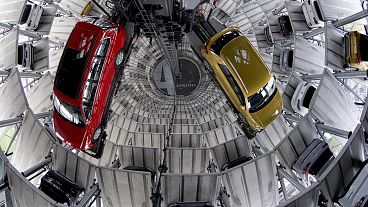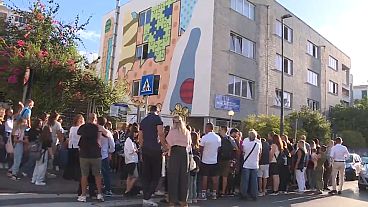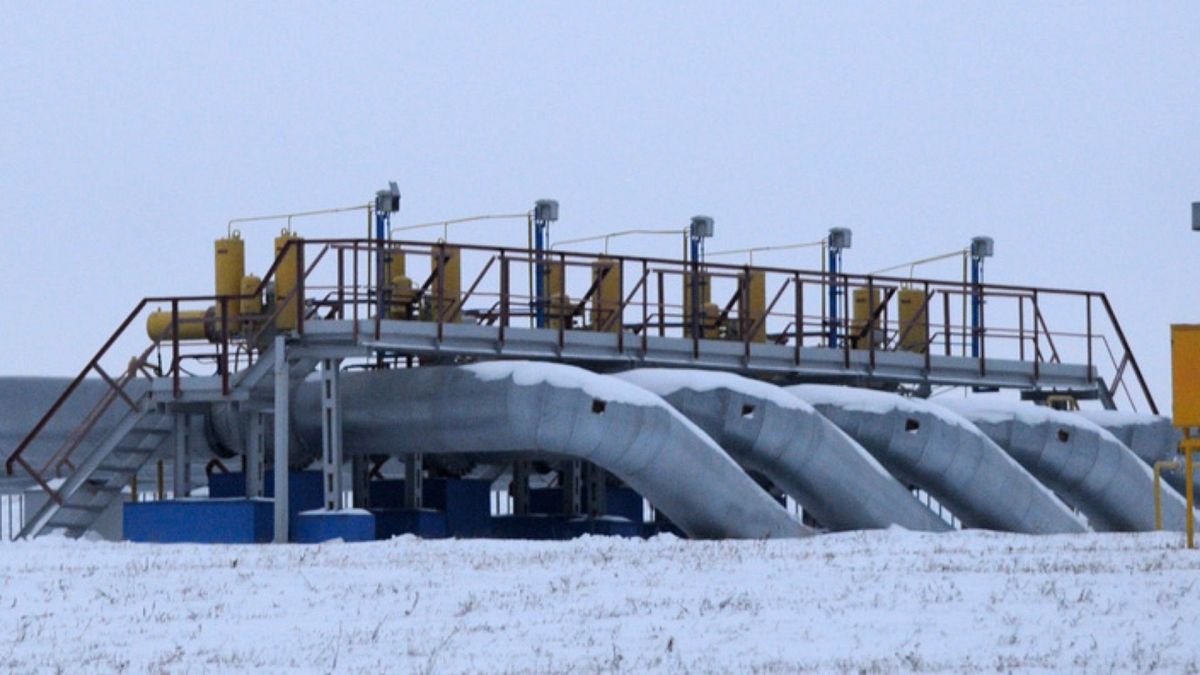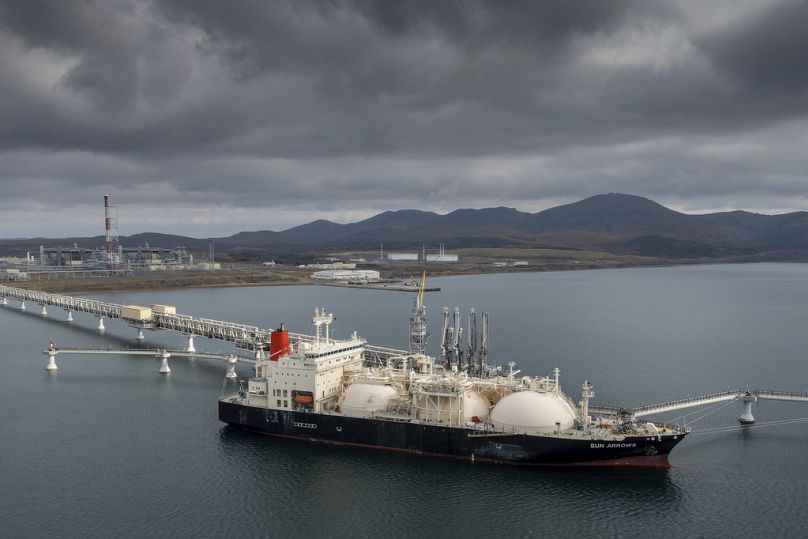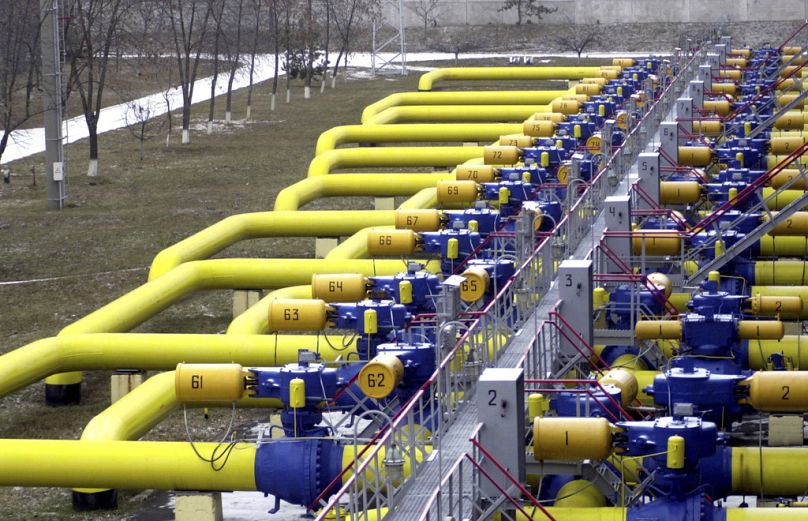The continent as a whole is still very dependent on Russian gas, despite Moscow's full-scale invasion of Ukraine being well into its third year.
Despite two and half years of Russia's war in Ukraine, raft after raft of sanctions and repeated assurances by the EU and individual European countries that they fully back Kyiv against Moscow's invasion, Russian gas continues to flow into the continent.
Even as Ukraine pushes on with its incursion into Russia's Kursk region, which contains a gas measuring station in the town of Sudzha, things haven't let up, and many are wondering why.
The town is important because natural gas flows through it from western Siberia, through Ukraine and then into the EU via Austria, Hungary and Slovakia where it generates electricity and heats homes.
Actual control over the station in Sudzha is difficult to verify due to military secrecy and lack of access for observers or journalists. Either way, the gas is still flowing through to Europe as Ukraine has never blocked it in its own pipeline systems throughout the war.
On Tuesday, 42.4 million cubic metres of gas were slated to pass through the Sudzha station, according to Ukraine's gas transmission system operator. That's roughly in line with the average for the past 30 days.
Before the war, Kyiv and Moscow agreed on a five-year deal under which Russia agreed to send set amounts of gas through Ukraine's pipeline system — built when both countries were part of the Soviet Union — to Europe.
Russian majority state-owned energy company Gazprom earns money from the gas and Ukraine collects transit fees.
That agreement comes to a head at the end of the year, and Ukraine's energy minister, German Galushchenko, has said the country has no intention of prolonging it.
Russia turns off the tap
Russia used to supply around 40% of Europe's natural gas before it launched its full-scale invasion back in February 2022, sending it via pipelines under the Baltic Sea (Nord Stream), Belarus and Poland, Ukraine, and the Turk Stream under the Black Sea through Turkey to Bulgaria.
When the war broke out, the Kremlin cut off most supplies through the Baltic and Belarus-Poland pipelines, citing disputes over a demand for payment in rubles.
Nord Stream was blown up in an act of sabotage, but details of the attack remain murky — most recently, a US media report claims that Ukraine was behind the attack, and German authorities have issued an arrest warrant for a Ukrainian citizen as part of their investigation into the matter.
Kyiv denies any involvement, however, and has routinely blamed Russia. Moscow instead claims the US staged the attacks, which Washington denies.
Regardless, the cutoff of Russian supplies caused an energy crisis in Europe. Germany had to shell out billions of euros to set up floating terminals to import liquefied natural gas that comes by ship, not by pipeline.
Customers were forced to cut back as prices soared, with Norway and the US stepping in to fill Europe's gas gap, becoming the two largest suppliers.
Europe viewed the Russian cutoff as energy blackmail and has outlined plans to completely eliminate Russian gas imports by 2027.
The lure of Russian gas persists
Still, Europe never fully banned Russian gas — even though the money Moscow earns from it supports the Kremlin's state budget, helps to prop up the ruble currency and ultimately funds the war machine.
It's a testimony to how dependent Europe was on Russian energy — and, to a lesser extent, still is. About 3% of Europe's gas imports flow through Sudzha, part of the roughly 15% of imports that came from Russia last year.
But Europe remains on edge about its energy supply given that it's an energy importer and just suffered an outburst of inflation triggered by high energy prices. The Sudzha flows loom larger for Austria, Slovakia and Hungary, who would have to arrange new supplies.
The European Union has come up with a plan to end imports of Russian fossil fuels entirely by 2027, but progress has been uneven lately across member states.
Austria increased its Russian gas imports from 80% to 98% over the past two years. While Italy has cut direct imports, it still gets Russian-origin gas through Austria.
Europe also continues to import liquefied gas, which made up 6% of imports last year. Trade data indicate that liquefied natural gas (LNG) shipments to France have more than doubled in the first half of this year.
Meanwhile, EU members Romania and Hungary have made gas deals with Turkey, which imports gas from Russia.
Armida van Rijd, senior research fellow at the Royal Institute of International Affairs in London, said, "Russian gas is being laundered through Azerbaijan and Turkey to meet continued high European demands".
She added that European efforts to reduce the use of Russian gas are "impressive" so far but explained that "the political reality is that it is extremely difficult for European countries to fully diversify their energy supplies when many are already struggling with high inflation and a cost-of-living crisis".
The EU recently agreed to slap a new raft of sanctions against Russia, targeting LNG supplies for the first time after several delays in getting the measures through.
Hungary, in particular, has repeatedly been a thorn in the bloc's side when it comes to sanctioning Moscow, both due to its reliance on Russian energy and its comparatively warmer relations with the Kremlin compared to its European neighbours.


